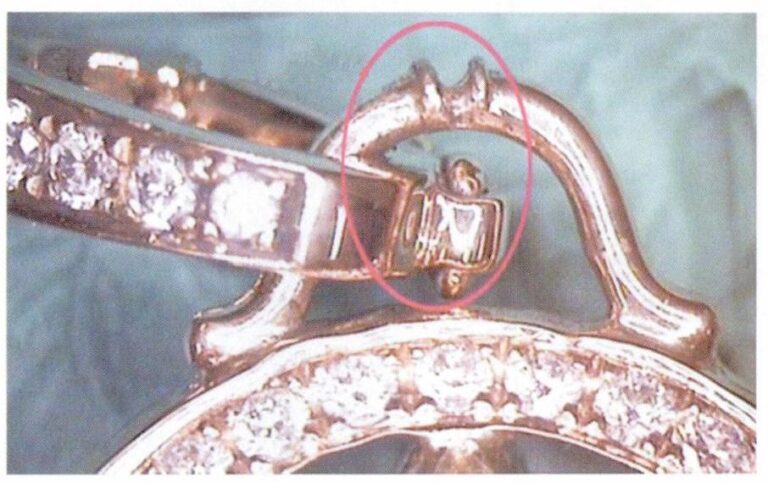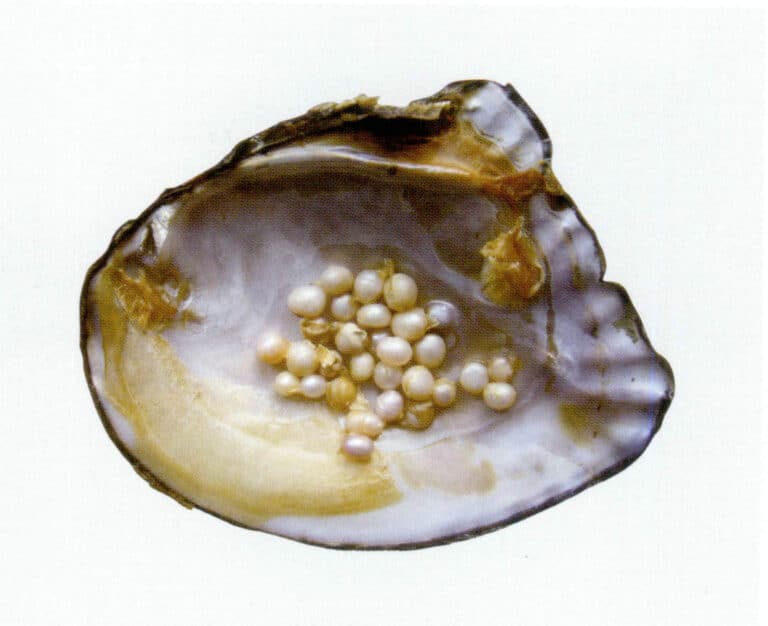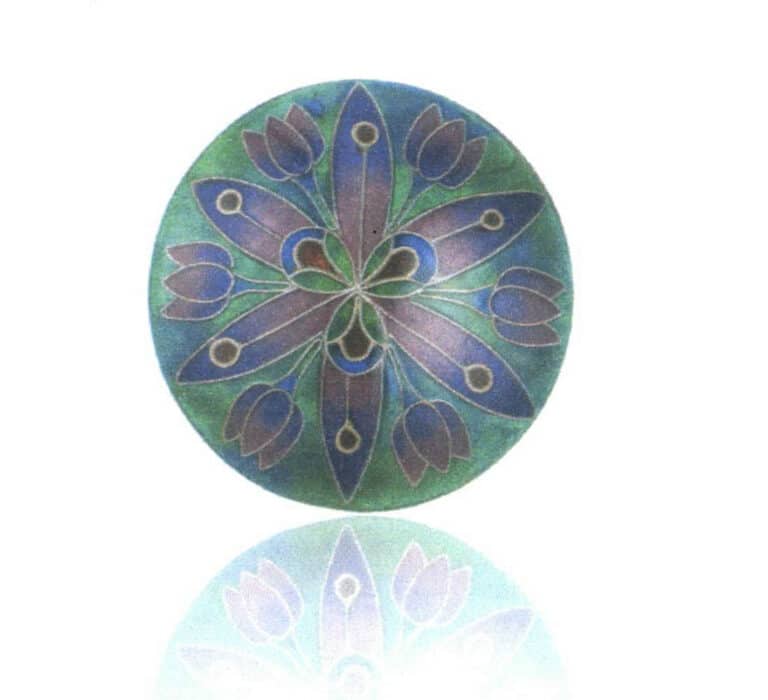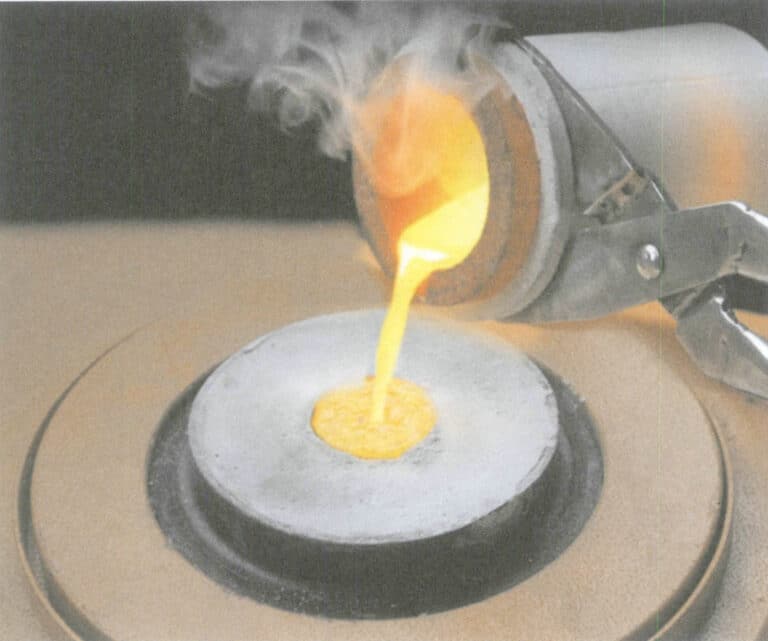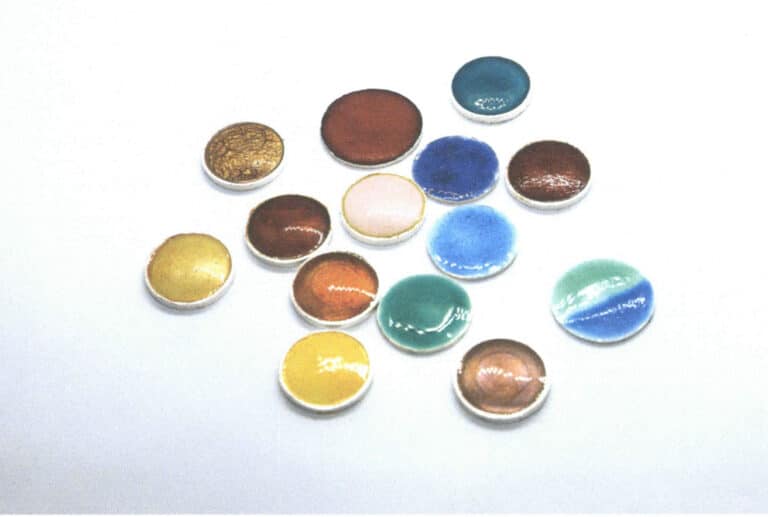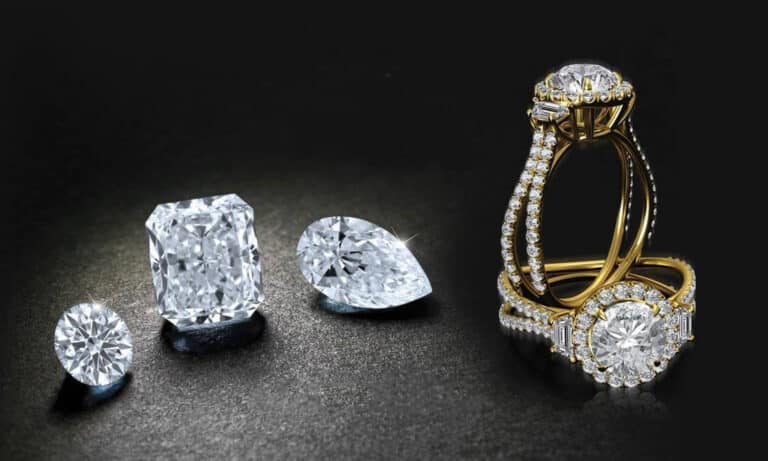Hvordan gjør Sobling kvalitetskontroll for smykkene dine?
6 viktige trinn for å sikre at du får den beste kvaliteten.
Innledning:
Smykkeproduksjon handler om kvalitet, fra råmaterialer som gull og sølv til det ferdige produktet. Denne guiden hjelper deg med å sjekke edelstenene, unngå støpefeil og sørge for at smykkene dine ser flotte ut. Enten du driver butikk, er designer eller bare lager spesialtilpassede smykker, er dette din guide til å lage vakre og varige smykker.

Ringhodet er ikke rett
Innholdsfortegnelse
Seksjon I Smykkeproduksjon Inspeksjon av råvarer og hjelpematerialer og vanlige feil
Mer informasjon finner du her: https://sobling.jewelry/how-to-inspect-quality-of-jewelry-raw-materials/
Ulike råvarer og hjelpematerialer er nødvendige i smykkeproduksjon, og ytelsen deres påvirker direkte kvaliteten og produksjonskostnadene. Derfor er det viktig å strengt kontrollere inspeksjonen av rå- og hjelpematerialer under produksjonen for å unngå bruk av ukvalifiserte materialer.
Materialene som brukes til smykkeproduksjon omfatter hovedsakelig edelmetaller som gull, sølv, platina og palladium, fyllmaterialer for ulike legeringer, edelstener som diamanter, rubiner, safirer og jade, og hjelpematerialer som brukes i viktige prosesser som støping, støpeformer, innfatning av steiner, polering og galvanisering, hvorav noen har direkte innvirkning på kvaliteten på smykkeproduktene.
1. Kvalitetskontroll av edelmetallråvarer
1.1 Ingots av rent gull
Gull er et av de mest brukte råvarene i produksjonen av smykker av edelt metall. Bedrifter kjøper vanligvis rene gullbarrer fra raffineringsanlegg, leverandører av edelt metall og andre kanaler, som kan brukes til å formulere 24K gull, 18K gull og forskjellige andre gulllegeringer.
(1) Purity requirements for pure gold igots
Renheten til rene gullbarrer er grunnlaget for å sikre kvaliteten på gullsmykker. ASTM B562-95 "Standard spesifikasjon for raffinert gull" er den eneste standarden som brukes for gullbarrer med høy renhet.
Urenheter i rent gull deles inn i metalliske, ikke-metalliske og radioaktive. Metalliske urenheter som platina er ikke oppført i standardene på grunn av deres verdi og godartede innvirkning på gullets ytelse. Ikke-metalliske urenheter fra renseprosesser er heller ikke oppført. Radioaktive urenheter er ubetydelige og ikke oppført. ASTM B562 tar bare hensyn til visse metalliske elementer, og produsentene kan forhandle om å liste opp flere elementer for å sikre kvaliteten.
(2) Analysis methods for impurity elements in puom gull Ingots
Kupelleringsmetoden er den tidligste og mest nøyaktige metoden for å bestemme gullinnhold, men den er begrenset når det gjelder å påvise urenheter i rene gullbarrer. Alternative metoder som spektroskopisk analyse og skanningelektronmikroskop (SEM) med energidispersiv spektroskopi (EDS) er mer effektive for påvisning av urenheter.
(3) The impact of impurity elements i puom gold bars on den quality of jewelry production
Visse urenheter i rene gullbarrer, som bly, vismut og arsenikk, kan forringe gullets ytelse betraktelig, mens andre elementer som silisium og jern noen ganger også kan ha skadelige effekter, som sprøbrudd og hardpunktsdefekt.
(4) Purification of gold
Når det oppstår for store skadelige urenheter i rent gull eller gulllegeringsmaterialer, er det nødvendig å vurdere å rense materialene. Det finnes forskjellige metoder for rensing av gull, for eksempel kvikksølvamalgamasjonsmetode, Aqua regia-rensemetode, elektrolytisk metode, perlegranuleringsmetode, ammoniumkloridmetode,

1.2 Rene sølvbarrer
I henhold til kjemisk sammensetning deles rent sølv inn i tre kvaliteter: IC - Ag99.99, IC - Ag99.95 og IC - Ag99.90. Den nasjonale standarden "GB / T4135-2002 Silver" spesifiserer tydelig urenheter i rene sølvbarrer.
Urenheter som bly, vismut, arsenikk og silisium i rent sølv kan føre til sprøhet på grunn av deres minimale løselighet og tendens til å danne lavsmeltende mellomfaser ved korngrensene. Deteksjon av sporforurensninger er avgjørende for å vurdere kvaliteten på rent sølv, og induktivt koblet plasma-atomemisjonsspektrometri tilbyr en mer effektiv analysemetode.
1.3 Ren platina Ingot
Den internasjonale standarden "ASTM B561:2005 Specification for Refined Platinum" spesifiserer kravene til renhet og urenhetselementer for ren platina, og "GB/T1419-2004 Sponge Platinum"-standarden vedtar også lignende bestemmelser.
1.4 Inspeksjonsmetoder for edelmetallmaterialer
Etter at smykkeselskaper kjøper edelmetallmaterialer fra markedet, må de gjennomføre innkommende materialinspeksjon.
2. Kvalitetskontroll av fyllmaterialer
I smykkeproduksjon har kvaliteten på "fyllmaterialene" i legeringene stor innvirkning på sluttproduktet, noe som krever grundig testing av nye fyllmaterialer med tanke på egenskaper som fysiske, kjemiske, mekaniske, prosesseringsegenskaper, sikkerhet og økonomi.
(1) Fysiske egenskaper
K-gullsmykker krever nøye vurdering av materialegenskaper som tetthet, farge, magnetisme og smeltepunkt for å optimalisere både edelmetallkvaliteten og den dekorative overflaten.
- Tetthet: Valget av fyllstofflegeringselementer i smykker påvirker legeringens tetthet, og erstatninger som sink for sølv reduserer tettheten, noe som gjør det mulig å lage lettere smykker med samme gullinnhold.
- Farge: Den mest brukte fargen K-gull omfatter tre serier: K gul, K hvit og K rød. For å beskrive fargen og fargestabiliteten til gulllegeringer kvantitativt, har smykkeindustrien innført CIELab-systemet for fargemåling basert på kolorimetriske prinsipper. Dette systemet bruker de tre koordinatene L*, a*, b* for å beskrive fargen, noe som gir stabile og pålitelige resultater.
- Magnetisme: Som en type edelmetallsmykker ønsker K-gullsmykker generelt ikke at legeringen skal utvise magnetisme, for å unngå tvil og klager fra forbrukerne om materialets ekthet.
- Smeltepunkt: Smeltepunktet til K-gulllegeringer, spesielt hvitt gull som inneholder nikkel og palladium, har stor innvirkning på gipsstøpeprosessen. Høyere smeltepunkter kan føre til nedbrytning av gipsen og krever dyrere støpematerialer for å sikre kvaliteten.

(2) Kjemiske egenskaper
De kjemiske egenskapene til K-gulllegeringer, spesielt motstandsdyktigheten mot anløpe og korrosjon, avhenger av sammensetningen, der gull med høyere karat har bedre motstandskraft, mens tilsetning av gunstige legeringselementer kan forbedre den beskyttende filmen og mikrostrukturen, noe som forbedrer anløpeevnen, spesielt i K-rødt gull.
(3) Mekaniske egenskaper
K-gulllegeringer forbedrer mekaniske egenskaper som styrke, hardhet og seighet for å oppfylle kravene til slitestyrke og struktur, med spesifikke hensyn til balansen mellom disse egenskapene i ulike typer K-gull, for eksempel nikkelbleket K-platina og K-rødt gull.
(4) Behandlingsegenskaper
Bearbeidingsytelsen vurderes hovedsakelig ut fra aspekter som støpeytelse, plastbearbeidingsytelse, poleringsytelse, sveiseytelse og resirkuleringsytelse.
(5) Sikkerhet
Smykker må være trygge og unngå skadelige elementer og allergener som nikkel for å forhindre hudreaksjoner.
(6) Økonomi
Valget av fyllstoff i K-gulllegeringer bør være kostnadseffektivt, ved å bruke allment tilgjengelige og rimelige materialer for å minimere produksjonskostnadene, spesielt for gull med lavere karat som krever mer fyllstoff.
(7) Inspeksjonsmetode for fylte legeringer
3. Kvalitetskontroll av hjelpematerialer
En stor mengde hjelpematerialer brukes i smykkeproduksjon, noe som påvirker kvaliteten på smykkeproduktene i varierende grad. Blant dem er virkningen av støpepulver, borsyre/boraks, digler og andre hjelpematerialer betydelig.
(1) Støpepulver:
et kritisk materiale i smykkestøping, må gjenskape voksformdetaljer nøyaktig, opprettholde stabile termokjemiske egenskaper og ha passende termisk ekspansjon for å sikre dimensjonsstabilitet, med jevn partikkelstørrelse.
(2) Boric acid aog borax:
Boraks og borsyre brukes i smykkeproduksjon for å forhindre oksidasjon av diamanter, forhindre misfarging av edelstener, fungere som flussmiddel ved sveising og som slaggmiddel i metallsmelting.
(3) Crucibles:
Vanlige smeltedigler inkluderer: grafittdigler, som består av grafittdigler med høy renhet og vanlige grafittdigler; keramiske digler, som inkluderer kvartsdigler, korunddigler, magnesiumoksiddigler, mullittdigler, blyoksiddigler, silisiumkarbiddigler, etc. Kravene til digler i smelting fokuserer hovedsakelig på brannmotstand, tetthet, termisk stabilitet og reaktivitet med smeltede metaller.
(4) Silicone gniber:
Silikongummi, som er foretrukket i smykkeproduksjon på grunn av sin inertitet, høye overflatefinish og selvsmørende egenskaper, har blitt det viktigste materialet for myke støpeformer, og har overgått naturgummi. Det er tilgjengelig i høytemperatur- og romtemperaturvulkanisert form, hver med sine fordeler og begrensninger.
(5) Jewelry Wax Matteerial:
Voksformer for smykker må ha et moderat smeltepunkt, termisk stabilitet, minimal krymping, overflatehardhet og fleksibilitet for å sikre støping av høy kvalitet.
(6) Electroplating Solution:
Elektropletteringsløsningens sammensetning, inkludert ulike salter og midler, er avgjørende for beleggets egenskaper ved galvanisering av smykker.

Del II Inspeksjon av muggkvalitet og vanlige defekter
Mer informasjon finner du her: https://sobling.jewelry/how-to-control-jewelry-molds-quality/
Master mold-versjonen er den første prosessen i smykkebehandlingsprosessen. Det er vanligvis laget av følgende metoder: først, håndlaget master mold versjon, det vil si gjennom saging, arkivering, sveising, meisling, etc., for å skape en skarpkantet, klarforet og glatt overflate master mold versjon. For det andre kan du skjære ut en voksmodell for hånd og deretter støpe den i en master mold-versjon. For det tredje kan man bruke ulike metoder for rask prototyping til å lage voks- eller harpiksmodeller, og deretter støpe dem i sølvversjoner, eller lage master mold-versjoner direkte i metall. Master mold-versjonen er grunnlaget for å sikre at smykkeprodukter oppfyller kundens kvalitetskrav, og det er nødvendig å styrke kvalitetskontrollen og prosesstesting av master mold-versjonen.
1. Master mold kvalitetskontroll innhold
Hovedinnholdet i kvalitetskontrollen av master mold-versjonen inkluderer: form, størrelse, vekt, struktur, overflatekvalitet, vannlinjer osv.
(1) Form:
Smykkeformene må stemme nøyaktig overens med designens utseende og intensjon, noe som krever at operatørene tenker tredimensjonalt og opprettholder estetisk integritet.
(2) Inspeksjon av dimensjoner:
Ulike typer smykker har både felles størrelseskrav og spesifikke størrelser for hver type som må tas i betraktning når du lager den første versjonen.
(3) Vekt:
Hovedformens vekt bestemmer i stor grad produktets vekt. Når masterformmaterialene og produktmaterialene er bestemt, er det et tilnærmet proporsjonalt forhold mellom vektene. Derfor kan produktets vekt kontrolleres ved å kontrollere vekten av masterformen.
(4) Opprinnelig platestruktur:
Strukturen til master mold-platen inkluderer hoveddelen, underdeler, innsatser, tilbehør, prosessvedlegg og etc.
(5) Master mold overflatekvalitet:
Overflaten på masterformversjonen skal være glatt og delikat, uten tydelige sandøyne, hull, riper, ujevne kanter og andre feil.
(6) Waterline:
I smykkestøping er granens utforming, inkludert plassering, antall, form, størrelse og tilkoblingsmetode, avgjørende for å sikre høy kvalitet på støpegodset ved å sørge for effektiv flyt og kompensere for krymping under fyllingsprosessen.
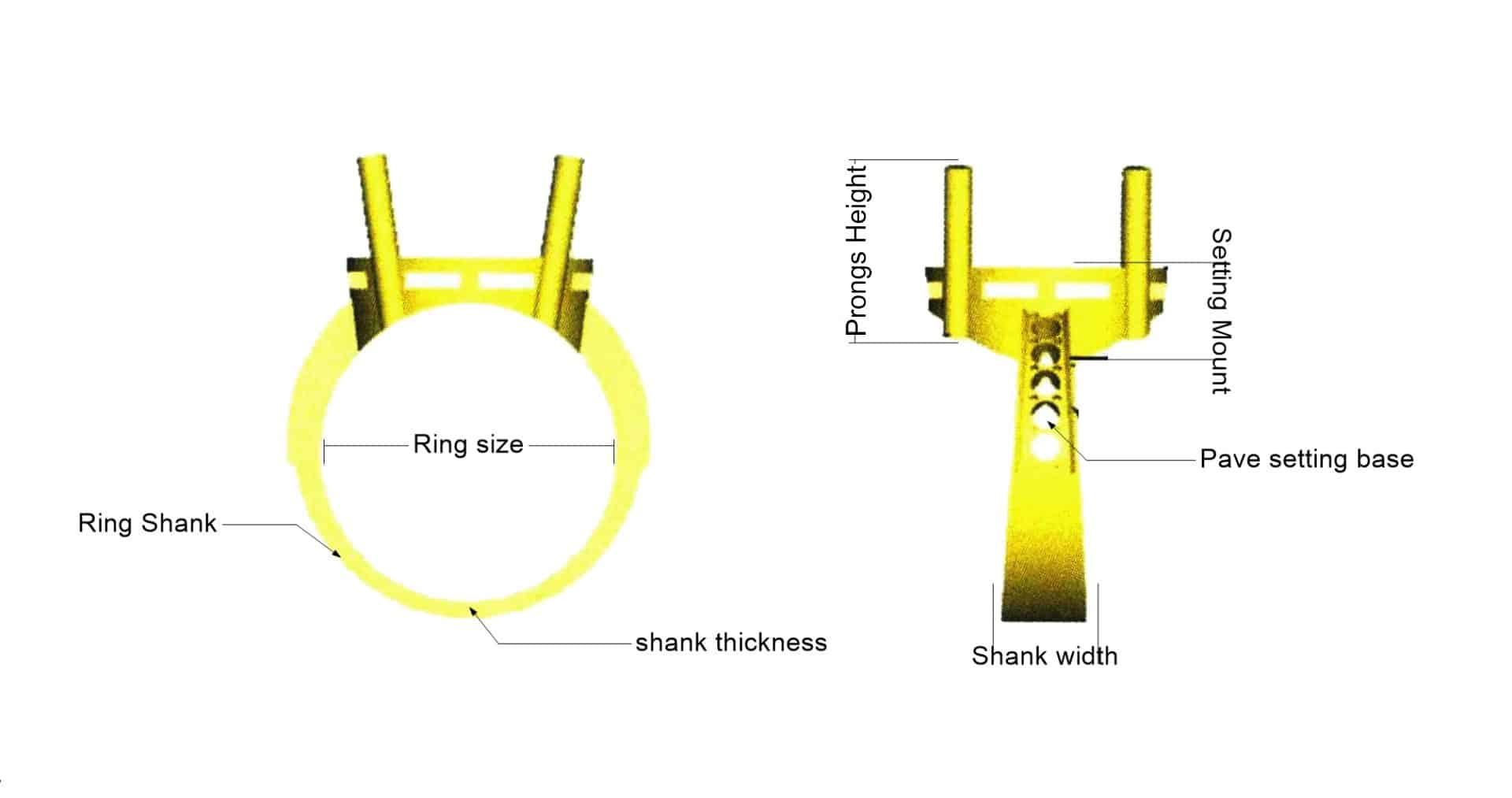
2. Personell og metoder for kvalitetskontroll
Mesterkvalitetsinspektører i smykkeproduksjon, kjent som "viewers" eller "reviewers", trenger omfattende kunnskap om design, produksjonsprosesser, materialer og håndverk for å sikre kvaliteten på CAD-tegninger, prototyper og sølvplater gjennom visuell inspeksjon og dimensjonsmålinger.
3. Vanlige defekter i masterformen
(1) Inkonsistens i form
Masterformer for smykker har vanligvis designtegninger, skisser eller kundekrav til utseende. Etter at masterformversjonen er ferdig, bør den kontrolleres mot tegningene eller bekreftes av kunden.
For deformasjonsproblemet med master mold-versjonen er det generelt flere løsninger. Den ene er å gjøre nødvendige justeringer av master mold-strukturen for å unngå å være for tynn eller ha for stort plan; det andre er å sette opp prosessdragstenger, koble hvert isolerte betjeningshåndtak med trekkstenger, noe som i stor grad reduserer sannsynligheten for deformasjon av betjeningsstangen; den tredje er å velge materialer med bedre ytelse for å lage sølvplaten. De siste årene har noen produsenter i bransjen gjort gunstige forsøk på å utvikle sølvlegeringer med høy hardhet, noe som betydelig forbedrer legeringens styrke og hardhet ved å legge til noen sporlegeringselementer og produksjonsprosesser. I tillegg virker det ofte mekanisk og stivt å bruke datategning for rask prototyping av dyreformer. Det anbefales å prioritere manuell voksutskjæring eller bruke datategning for å lage hovedkroppsmodellen, og deretter behandle den manuelt.
(2) Inkonsistens i dimensjonene
Smykker krever ikke de samme strenge dimensjonene som mekaniske deler, men når det gjelder bruk, innfatning og montering, for eksempel ringstørrelse, armbåndsringstørrelse, armbåndslengde, koordinering av halskjede og melonfrøøre, koordinering av innlegg og base, kreves det nøyaktige hovedformdimensjoner.
(3) Hovedformens vekt stemmer ikke overens med
For smykker av edelt metall er det nødvendig å kontrollere vekten av gull, med tanke på kostnad og markedsakseptpris. Dette må sikres fra platefremstillingsstadiet for å hule ut skjulte deler som baksiden og konkave deler så mye som mulig for å redusere produktvekten samtidig som smykkets ytre dimensjoner og strukturelle styrke oppfylles.
(4) Masterformens struktur er urimelig
Hovedformens struktur har avgjørende betydning for produksjonskvaliteten nedstrøms, og krever en design som balanserer kundens spesifikasjoner med produksjonsmulighetene for å minimere defekter og prosessutfordringer.
(5) Dårlig overflatekvalitet på masterformen
Overflatekvaliteten på masterformversjonen bestemmer overflatekvaliteten på produktet. Det må oppnås en glatt og ren masterformoverflate for å redusere arbeidsmengden med polering og reparasjon i påfølgende prosesser.
(6) Problemer med vannledningene i master mold-versjonen
Vannlinjen fungerer både som kanalen for metallvæsken som skal inn i formhulen og kanalen for å supplere metallvæske for størkning og krymping av støpingen. Hvorvidt vannlinjen er satt rimelig eller ikke, er relatert til støpens integritet, overflatens tetthet osv.
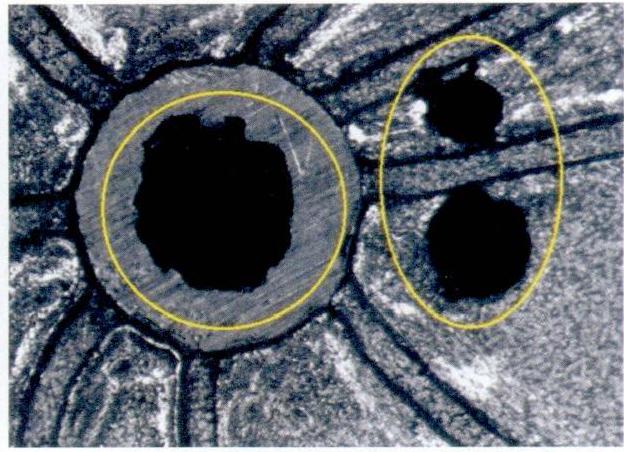
Del III Kvalitetskontroll og feilanalyse av støpeformen
Mer informasjon finner du her: https://sobling.jewelry/jewelry-quality-inspection-and-defect-analysis-of-thewax-lost-casting/
Den tapte voksprosessen er mye brukt i masseproduksjon av smykker, og involverer mange prosesser, inkludert pressing av gummiformer, voksinjeksjon, voks tre setting, gipsformstøping, voksavvoksing og baking, og metallstøping. Når man analyserer hvert trinn i prosessen, ser man at hvert vellykkede trinn bygger på det foregående, og at ethvert problem i et tidligere trinn kan påvirke kvaliteten på hele arbeidsstykket.
1. Kvalitetskontroll og vanlige feil i gummiform
Smykker gummiformer er laget av naturgummi, høytemperatur vulkanisert gummi og romtemperatur vulkanisert gummi.
(1) Innhold i kvalitetskontrollen av gummiform
For å evaluere kvaliteten på en gummiform, bør den hovedsakelig vurderes ut fra aspekter som gummiformstruktur, overflatekvalitet på indre hulrom, mekaniske egenskaper til gummiformer (inkludert gummiformens elastisitet, hardhet, rivestyrke osv.) og prosesstiltak for gummiform (inkludert om hellesystemet og innstillingen av innsatser er rimelig).
(2) Vanlige defekter i gummiformer
- I den tapte voksstøpingen av smykker, når du lager voksformer med silikongummiformer, er det ikke nødvendig å skille seg fra det største tverrsnittet som metallformer for å demold jevnt fordi silikongummiformer lett blir bøyd og deformert. Derfor, for å redusere skillet på avskjedsflaten til utseendet på arbeidsstykkets front, er avskjedsflaten generelt valgt i kanten av ringen, og plasserer det meste av ringen på den ene siden av formen.
- Når du trykker på formen, bør formens posisjoneringsmetode vurderes først, og tilstrekkelig plass bør reserveres når du ordner den opprinnelige versjonen. Det er vanligvis to ofte brukte posisjoneringsmetoder for former, den ene er fire-hjørne fremspringsposisjonering; den andre er kantsagtannlignende parringslinjeposisjonering.
- Only by smoothly exhausting the air in the rubber mold cavity during wax injection and avoiding the resistance to wax filling can a wax model with clear contours be obtained. The rubber mold should not only have air vent holes, but also pay attention to the position and direction of the openings.
- Before wax injection, check the nozzle of the rubber mold. If there is accumulation of wax material, impurities, etc., clean it first before injecting wax.
- The rubber mold must have good elasticity, cannot stick to the wax mold, have high tensile strength, otherwise the details will not be clear, and the life of the rubber mold will be shortened. When the rubber mold becomes soft and sticky, it is mainly due to insufficient rubber vulcanization, which is caused by short curing time or low temperature. Therefore, it is necessary to appropriately increase the working temperature of the mold and extend the molding time.
- Determine the appropriate vulcanization temperature, vulcanization time, and mold pressure based on the specific structure of the rubber mold to solve the issue of the rubber mold is too hard, cannot be leveled, and the two halves of the rubber mold cannot be closed.
- Use clean and dry adhesive material
- Add a large pin as an insert and assemble it into the rubber mold. After waxing, simply pull out the pin to obtain a regular through hole.
- To ensure the inner wall of the rubber mold cavity is smooth.
- When cutting the rubber mold, consider whether it is convenient to remove the wax mold.
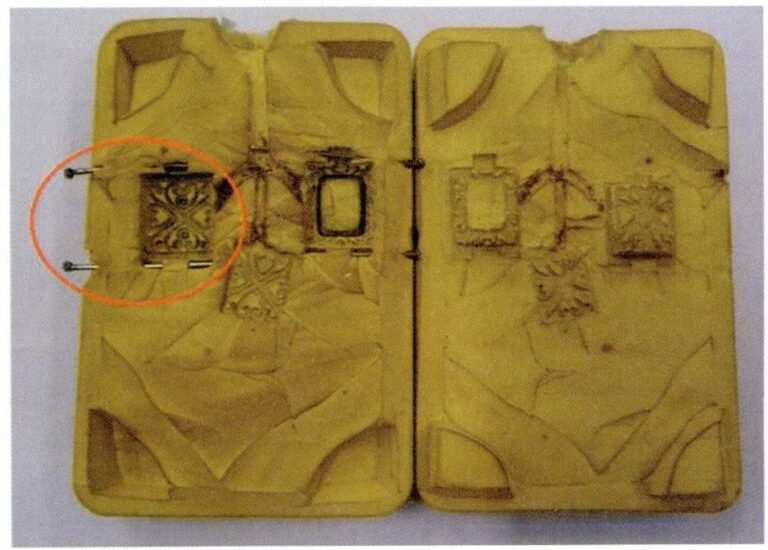
2. Quality Inspection and Common Defects of Wax Mold
(1) Quality Inspection Content of Wax Mold
To evaluate the quality of a wax mold, it is generally assessed from the following aspects:
- Shape aog size. The wax mold should accurately reflect the shape of the original model, without obvious deformation. It should meet the size requirements, not soften or deform easily, and be easy to weld.
- Appearance quality. The wax pattern surface should be smooth, fine, clean, without obvious surface shrinkage, cracks, wrinkles, bulges, or other defects.
- Intrinsic quality. Voksmønsteret skal være tett, uten tydelige luftbobler inni, og etterlate lite askerester når det brennes.
- Mechanical properties. The jewelry wax pattern should have good strength, flexibility, and elasticity, with sufficient surface hardness at room temperature to prevent surface abrasion in subsequent processes after wax loss casting. The wax pattern should be able to bend without breaking when taken out of the rubber mold, and automatically return to its original shape after removal. The wax pattern and wax core should be securely welded during wax tree planting and not easy to fall off.
(2) Common Wax Mold Defects
- Flash: Adopt measures to optimize wax injection molding, including adjusting air pressure, wax temperature, clamping force, and rubber mold quality.
- Incomplete or cold shut, flow marks on the wax piece: Enhance wax injection molding by increasing air pressure, wax liquid temperature, adjusting mold clamping force, cleaning nozzles, venting molds, and preheating in cold weather.
- Air bubbles appear in the wax mold: Ensure proper wax injection by adjusting air pressure, wax quantity, temperature, nozzle alignment, and maintaining vent line clearance.
- Cracks or complete fractures occur in some parts of the wax piece: Improve wax injection by using more new wax, reducing mold quantity during recycling, opting for higher quality wax, refining mold cutting methods, and exercising caution in mold removal.
- Wax mold deformation: To prevent wax deformation, solutions include cooling wax pieces adequately in molds, selecting harder wax for high-temperature conditions, ensuring proper mold alignment, and adding support to delicate original versions.
- Wax Mold Surface Roughness: Maintain mold quality and cleanliness by using release agents sparingly, inspecting and cleaning molds regularly, ensuring wax quality, and using a neutral pickling solution for thorough cleaning.
- Wax piece overweight: Ensure consistent wax piece weight and quality using an automatic wax injection machine with mechanical clamping and precise temperature control.
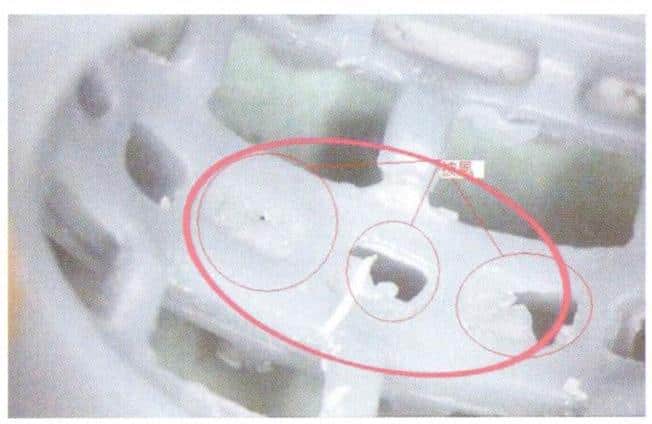
3. Quality Inspection and Common Defects of the Casting Mold Blanks
(1) Quality Inspection Content of Casting Mold Parts
The quality inspection of the mold blank mainly focuses on the following aspects:
- Appearance: Kontroller emnets integritet, om dimensjonene oppfyller kravene, og om det er noen feil som defekter, deformasjoner, sprekker osv. Kontroller om fargen oppfyller kravene.
- Surface quality: Whether the surface of the casting is smooth and dense, and whether there are defects such as sand holes, metal shrinkage, air holes, etc.
- Internal quality: Whether the poured metal is correct, whether there are any wrong colors or insufficient colors, and whether the mechanical properties such as hardness, strength, and plasticity meet the requirements.
- Other aspects: Such as whether it is magnetic, whether it can meet the requirements of metal release, etc.
(2) Factors affecting the quality of investment casting molds
There are many process factors involved in the jewelry reverse mold process, such as physical properties of metal materials, melting process parameters, mold process parameters, pouring process parameters
(3) Common defects of investment casting molds
Common defects of investment casting molds are such a pinholes with segregation in castings, entrapment porosity in castings, shrinkage porosity defects, surface roughness, flash, sand hole, slag inclusion, cold shuts defects, metal beads, fracture and so on.
① Porosity Defects:
- Use clean, dry metal materials and control the proportion of new to old metals.
- Ensure effective degassing treatment of metal liquid and control temperature and atmosphere during smelting.
- Improve mold strength and control pouring pressure to prevent gas entrapment.
② Shrinkage Porosity Defects:
- Select alloys with a small solidification range and control the temperature and atmosphere during smelting.
- Design the casting system to facilitate sequential solidification and use proper mold temperatures.
③ Surface Roughness:
Improve the quality of patterns used for casting and control the quality of casting powder and mold-making processes.
④ Flash (Pi Feng):
Increase mold strength, ensure proper storage of casting powder, and avoid rapid temperature changes during firing.
⑤ Sand Holes:
Enhance mold quality and casting processes to prevent the inclusion of foreign matter in the metal.
⑥ Slag Eye (Clinker):
Clean the metal furnace charge and crucible, and improve slag removal methods before pouring.
➆ Incomplete and Cold Shut:
Ensure complete filling of the mold cavity by using appropriate pouring temperatures, mold temperatures, and casting system designs.
➇ Gold Beads:
Improve the dewaxing process by controlling the water-to-powder ratio and the operation time.
➈ Fracture:
Avoid external mechanical stress during handling, control the cooling rate after casting to minimize thermal shock, and ensure proper alloy composition to avoid brittleness due to microstructural transformations.
➉ Measures for Specific Fracture Cases:
- For composition-induced brittleness, refine and remix old gold to remove impurities.
- For mechanical stress fractures, ensure gentle handling and avoid concentrated forces on the workpiece.
- For thermal shock fractures, determine appropriate quenching times based on alloy properties and casting size.
- For structural transformation fractures, control the cooling rate and minimize thermal and organizational stress.
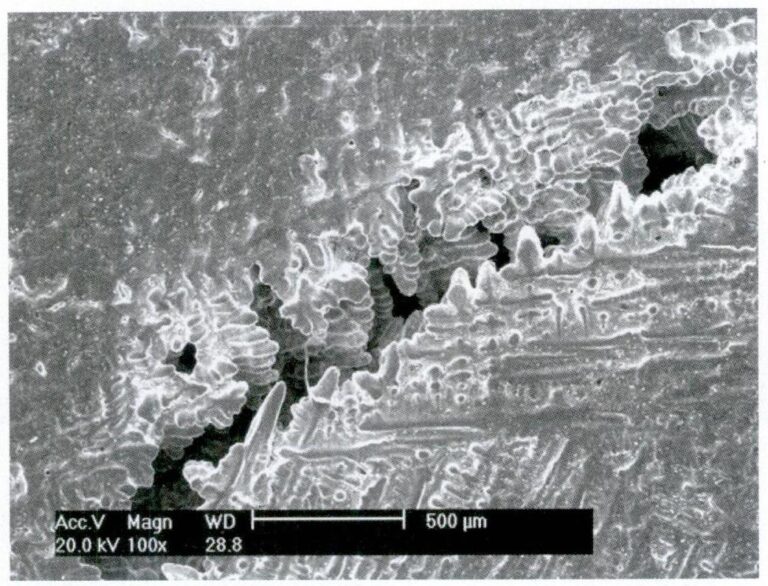
Copywrite @ Sobling.jewelry - Tilpasset smykkeprodusent, OEM og ODM smykkefabrikk
Section IV Quality Inspection of Finishing and Analysis of Common Defects
Mer informasjon finner du her: https://sobling.jewelry/jewelry-quality-inspection-and-defect-analysis-of-stone-settings/
1. The model quality inspection content
In the jewelry making process, the model making process is a very important process. It is the process of integrating, fastening, welding, and rough finishing the jewelry blanks made by pouring or stamping using manual techniques and equipment.
The purpose of model making is to restore the original shape. Poor model making of jewelry blanks will directly affect the final quality of the jewelry.
Different types of jewelry have their own special requirements during modeling. For example, rings require coordinated and uniform setting, round and full claws, perforation if needed; earrings require symmetry, uniform size, equal length, elasticity on the back to hold the earring in place; necklace or bracelet chains should be straight, flexible in chain joints, appropriate tightness of chain clasps for easy wearing without automatic detachment; pendant seed ear size should be appropriate; brooch pin welding should be appropriate, with moderate length.
2. Common Defects in Finishing
(1) Common Finishing Defects in Various Types of Jewelry
① Filing-related defects:
In the process of filing, a large number of tools such as steel files and sandpaper are used to process the surface of the workpiece. The processing effect is directly related to the skill, carefulness, assessment method of the operator. When the processing is not done well, file-related defects are prone to occur, such as incomplete filing, over-filing, and uneven filing.
② Defects in Gold Materials:
Such defects refer to the poor quality of the metal, which is not generated during the die forging stage but brought about by previous processes, for example: Obvious shrinkage is observed on the surface of the jewelry die forging after water removal; After jewelry finishing, sand holes are exposed in a certain area; Residual flash remains after jewelry workpiece is finishing; Cracks appeared during jewelry finishing.
③ Welding defects:
When jewelry is being modeled, welding is often used to assemble components, repair defects, etc. The main welding methods used are laser welding and flame brazing. Improper welding operation can easily lead to welding sand holes, incomplete penetration, weak welding, and other defects.

(2) Defects of various types of jewelry finishings
In addition to common mold problems, corresponding category-specific mold defects often occur for different types of jewelry.
① Defects in bracelet and necklace finishing:
For bracelet and necklace jewelry blanks, the shape of the workpiece blank needs to be corrected to meet the design requirements, then the chain links are connected, and through processes such as filing, buckling, welding, holding, and saving, they are combined into a perfect piece of jewelry. It is required that the chain links fit tightly, the combination is flexible, the distances are uniform, the overall balance of the chain is maintained, and there are no uneven sections. Some common defects in bracelet and necklace finishings are such as the sizes of the fastening rings are not consistent; the fastening lines between chain links are too long; the tightness between different chain links is inconsistent; weak welding position; use welding (The occurrence of virtual welding, missing welding, and the inability of solder to penetrate at the welding site); Welding death; the ring was not welded properly; the bottom of the link socket is deformed; the length of the chain does not meet the requirements; the duck lever assembly tolerance is poor.
② Defects in holding the ring:
The holding of the ring generally goes through processes such as filing water mouth, shaping, assembling components, welding, boiling water, filing, sandpaper saving, and leak passing machine. In these operations, in addition to common generic holding problems, holding problems specific to the ring category often occur, such as refusal to follow the rules; the inner ring of the ring is not rounded; the ring shoulder is too thin; the ring size does not match; the bottom of the ring network base is deformed; ring net bottom hole deformation; ring claw deformation; Men’s Ring Side Without Angle; cheshuikou Injured the Ring; the flower head of the ring is not aligned.
③ Earring holder defects:
The earring holder must go through processes such as filing water mouth, shaping, buckling thread, welding, preserving water, filing, sandpaper saving, and leak machine. In this process, common earring holder defects are such as the earring position is too tight, and the ear pin cannot match the needle hole; ear needle too long; ear needle burnt; earrings are not matching; the earring opening is deformed; the ear clip is too tight, and the movement is not smooth; the ear pin is not straight; the ear flap button line is too long
④ Defects in pendant modeling:
The pendant is a pendant used in conjunction with a chain. The modeling process includes filing the water mouth, checking the shape, welding the melon seed ear, filing, saving sandpaper, and water outlet. In addition to common modeling defects, the common defects of pendant modeling are such as the suspension ring is not round; the suspension ring does not match the melon seed ears; the melon seed ear hole is too small to pass through the chain; the pendant is not hung properly; the corner position of the pendant has been filed off; pendant back perforation; inconsistent sizes of decorative holes on the pendant; pendant stud incomplete.
⑤ Hand gong holding model defects:
Such as duck lever box collapse edge; the duck lever is not tight enough; the duck lever positioning is too tight, leading to the head of the finishing breaking; bracelet compared to the tube welded to death; bracelet compared to the tube position detached; bracelet “8” character made too loose; the inner circle of the bracelet is not round; the bracelet modeling requires smoothness and no abrupt thickness changes; in order to reduce the weight of gold and highlight the gemstone effect, sometimes a bottom hole is opened in the bracelet, requiring its shape to be round. When problems such as deformities and uneven edges occur, they should be trimmed to the required shape by modeling.
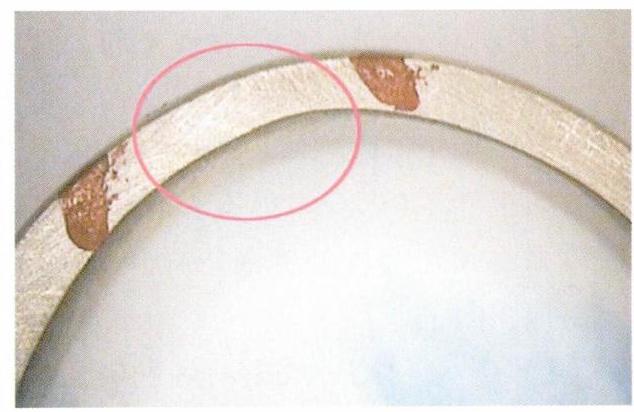
Section V Inlay Quality Inspection and Common Defect Analysis
Mer informasjon finner du her: https://sobling.jewelry/quality-inspection-and-common-defect-analysis-of-jewelry-finishing/
The most dazzling part of inlaid jewelry is the gemstones of various shapes and colors inlaid in it. The quality of the inlaying process directly affects the appearance and grade of the jewelry. However, inlaying is mainly done by manual operation, and the quality of inlaying is closely related to the work attitude, skill level, and proficiency of the operator. Therefore, it is necessary to strengthen the inspection of the quality of inlaying during the production process.
1. Inlay quality inspection content and quality requirements
(1) Inlay quality inspection content
The inspection and control of inlay quality mainly focus on the quality of gemstones and inlay work. Gemstone quality inspection in jewelry making involves checking stones for weight, color, clarity, and defects before setting, using tools like magnifying glasses and electronic scales, to ensure they match order specs, while inlay work inspection focuses on the setting quality and gem integrity, using tools such as magnifying glasses and steel needles.
(2) Quality requirements for inlaying
Common inlaying methods mainly include prong inlaying, claw inlaying, bezel setting, pit inlaying, flying edge inlaying, prong setting, forcing inlaying, edgeless inlaying, etc. According to the types of gemstone settings, it can be divided into wax inlaying and gold inlaying. Each inlaying method has its own characteristics, but many quality issues are common, generally divided into gemstone issues and setting issues, requiring intact gemstones, firm setting, no loose stones, oblique stones, high and low stones, twisted stones, crooked stones, etc., claws, pits, prongs, edges, holding, scraping smooth, good appearance.
Quality requirements for various inlaying methods include symmetrical claws for claw inlaying, consistent pit depth for pit inlaying, uniform gold edges for forcing inlaying, round and symmetrical prong heads for prong settings, and uniform prong positions for flying edge settings, all ensuring proper fit and appearance of the gemstones.
2. Common Inlay Problems
(1) Problems with Gemstone Texture:
During the production of inlaid jewelry, various gemstone texture problems are often encountered, mainly including issues related to gemstone material, gemstone grade, gemstone cutting, gemstone size, gemstone color, gemstone quantity, etc.
- The gemstones to be set do not match the material requirements of the order: Natural crystals with artificial zircon mixed in; Diamonds were swapped during the setting process.
- Gemstone Grade Issue: Gemstones are generally graded based on color, clarity, cut or processing characteristics, single crystal size or size of jade blocks, etc. The grading standards for different types of gemstones are not the same, and different international organizations or large companies may not have the same standards for grading the same type of gemstone. For diamonds, GIA, the Gemological Institute of America, pioneered the diamond grading standards currently recognized in the industry, including color, clarity, cut, and carat weight, known as the standard.
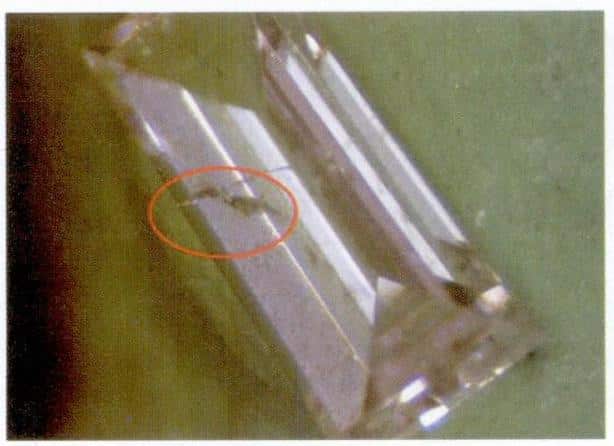
(2) Stone Matching Issues:
Stone matching is an important link to ensure the quality of setting and production efficiency. Here are some common stone matching issues:
- The diamond shape does not match the setting: One basic requirement for gemstone setting is to match the shape, that is, the shape of the gemstone should basically match the size and shape of the setting, which should be paid attention to from the beginning of the stone setting which means when setting the stones, the size of the diamond should be reasonably selected, and if necessary, the diamond should be cut and polished to better fit the setting.
- Incorrect stone setting angle during stone setting: When setting stones, it is necessary to consider the overall effect rather than just the arrangement of individual stones.
- The diamond is too long: This makes it easy to damage the diamond when setting the tiger claw stone.
- The diamond is too short, resulting in obvious gaps between the gold and the stones, affecting the stability and appearance of the diamonds.
- There is a large contrast in gemstone colors: When matching stones, it is necessary to select gemstones with similar colors from the materials.
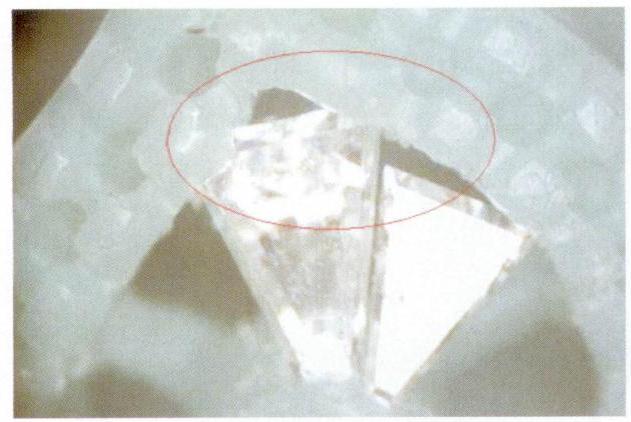
(3) Setting Issues:
Setting issues involve both the setting effect of gemstones and the handling effect of metal claws (edges). Setting is one of the important indicators to measure the grade of a set-inlaid product. Different setting methods encounter common setting issues, as well as issues specific to the setting method.
① Common Setting Issues in Pave Setting:
Pave setting is usually not used for setting main stones, but for setting smaller (diameter less than ) side stones or clusters of small diamonds. It fully utilizes the good ductility of precious metals, uses special tools to dig out small metal teeth, catches the girdle of the gemstone, and thus secures the gemstone. Pave setting is widely used for setting small granular gemstones, and can be divided into two-prong setting, three-prong setting, four-prong setting, and close-prong setting according to the number of prongs.
To inspect the quality of pave setting work, it should be examined from aspects such as the flatness, fastening condition, intactness, and treatment of the prong head of the gemstone. The set gemstone should not have phenomena such as slanted stones, uneven stones, used stones, loose stones, or rotten stones; the light gold position around the gemstone and the gold edge should not be scratched; the prong head should be round, not flattened, and no gold chips should appear on the prong edge; the prong should not be too long or too short, and so on.
② Common setting problems with claw setting:
Claw setting is a representative of traditional craftsmanship. It tightly holds the gemstone with long metal claws (columns), with minimal metal covering the gemstone, allowing a large amount of light to enter from all directions, revealing the dazzling brilliance, making it appear larger and more sparkling. Claw setting is suitable for gemstones of different sizes, even large main stones can be securely fixed, becoming a popular single-grain diamond jewelry inlay craft in the market. Claw setting claws come in various forms such as round claws, square claws, triangular claws, finger claws, figure-eight claws, six claws, four claws, three claws, two claws, single claws, and common claws.
Good claw setting worker, should ensure that the claws are tightly attached to the gemstones; the gemstones must be flat, without phenomena such as slanted stones, high and low stones, loose stones, rotten stones, or used stones; the length of the claws should be consistent and symmetrical, not crooked; the claw heads should be regular, not pinched on the back of the claw; the gripping position of the claws should be consistent in depth, shallowness, height, and lowliness.
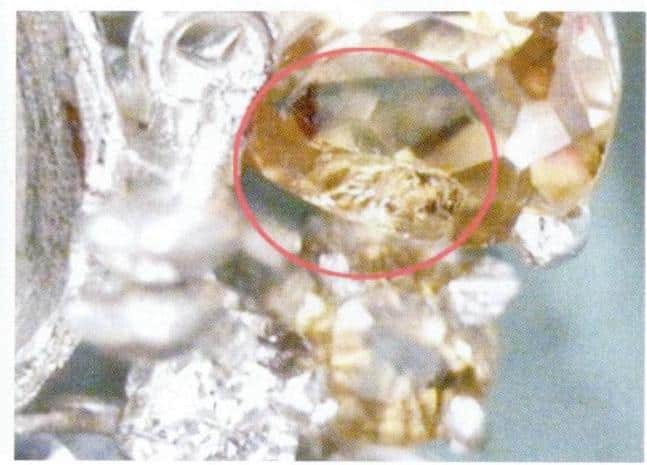
(4) Common Setting Issues in Channel setting:
Channel setting, also known as forcing setting or clamping setting, is a setting method where a groove is carved on the side of the setting, the gemstone is placed into the groove, and firmly pressed. This method is commonly used for setting secondary stones in high-end jewelry. Additionally, some square and trapezoid diamonds are set using channel setting, resulting in a better visual effect.
Common channel setting methods include prong setting and channel setting. Prong setting uses the tension of metal to secure the waist or the waist and bottom tip of the gemstone, exposing more of the gemstone to showcase its brilliance. Channel setting involves carving grooves on the precious metal mount, then placing the gemstone into the groove. In this method, gemstones are set one after another in a continuous line within the metal channel, utilizing the metal on both sides to support the gemstones, creating a smoother appearance on the jewelry surface. Channel setting is suitable for round brilliant-cut gemstones of the same diameter as well as for varying trapezoid-cut gemstones.
The setting of gemstones should be flat, consistent in height, density, without loose stones, swinging stones, rotten stones, or tilted stones; reasonable control of the spacing of gemstones based on the shape, quantity, and length of the setting position; the gold edge should be closely attached to the gemstone edge; after setting the gemstones, there should be no deformation or unevenness on the gold surface, etc.

(5) Problems with Invisible setting:
Invisible setting is a new type of gemstone setting method, which is deeply welcomed in the market for its attractive gemstone appearance effect. The basic principle is that when setting multiple rows of gemstones, shallow grooves are opened on the bottom side of the gemstones, transferring the metal fixing the gemstones from the stone surface to the bottom groove, and using external force to force the metal into the groove to secure the gemstones. Therefore, only the outermost metal of the gemstone is visible, and no metal can be seen between the gemstones, commonly known as “seeing the stone but not the metal.” Invisible setting technology breaks the traditional setting technique, allowing diamonds to have no metal obstruction above the waist, ensuring the best light penetration at the crown and waist, making the gem’s fire color more perfectly shine, thus ensuring that the diamond presents the most perfect optical effct and further enhancing the appearance of the entire jewelry. Especially for cluster-set diamonds, since there are no metal prongs or edges around the diamonds, the joining and color transition between diamonds are more perfect and natural, creating more elegant patterns. Without the traditional metal prong obstruction, light can propagate more widely between diamonds, making the diamonds more brilliant and dazzling.
The requirements for Invisible setting craftsmanship are as follows: the gemstones must be flat, tight, and consistent in height, with no gaps visible to the crossbar, and no loose, rotten, misused, or slanted stones should appear. The gemstones must align with each other, and the cross positions must be correct. However, Invisible setting is a high-demand manual craftsmanship setting method, prone to setting problems.
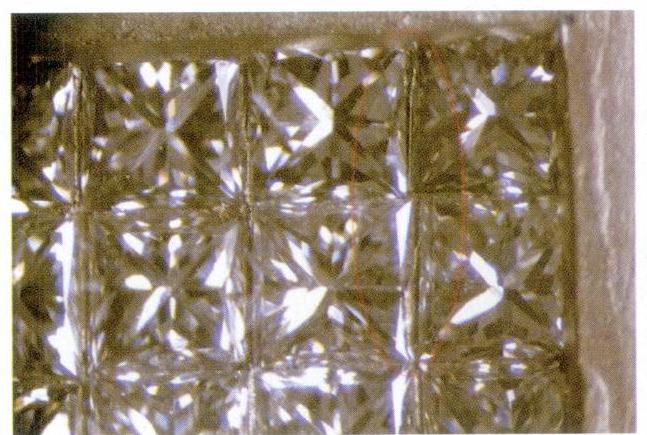
(6) Common setting problems in bezel setting:
Bezel setting is a method of tightly setting gems surrounded by metal. It can be divided into edged bezel setting and edgeless bezel setting. Edged bezel inlay has a metal edge wrapped around the gemstone, technically called a “stone bowl,” which is a common gemstone setting; edgeless bezel setting wraps the gemstone with metal without a circular edge, mainly used for inlaying small granular gemstones or side stones. In addition, according to the size of the metal edge surrounding the gemstone, it can be further divided into full bezel setting, half bezel setting, and tooth bezel setting, among which tooth bezel setting is a method of setting cabochon gemstones, only wrapping the top corner of the gemstone, also known as “corner setting.”
Bezel setting securely sets gemstones and is suitable for inlaying gemstones with large grains, high prices, and bright colors, such as large diamonds, faceted or saddle-shaped jadeite jade ring faces; but due to the metal edge wrapping, the light passing through the gemstone is relatively less, and the visible area of the gemstone is also reduced compared to the original stone. Therefore, it is not suitable for transparent gemstones, those desiring to highlight fire color, and inlaying gemstones with small grains.
Bezel setting is a inlaying craft with certain difficulty, requiring the gemstones to be flat after inlaying, in the center of the setting, without slanting stones, loose stones, rotten stones, high and low stones, etc. The workpiece cannot deform after pressing, the gold edge should be smooth, the surface gold should retain a certain thickness, not too thick or too thin.
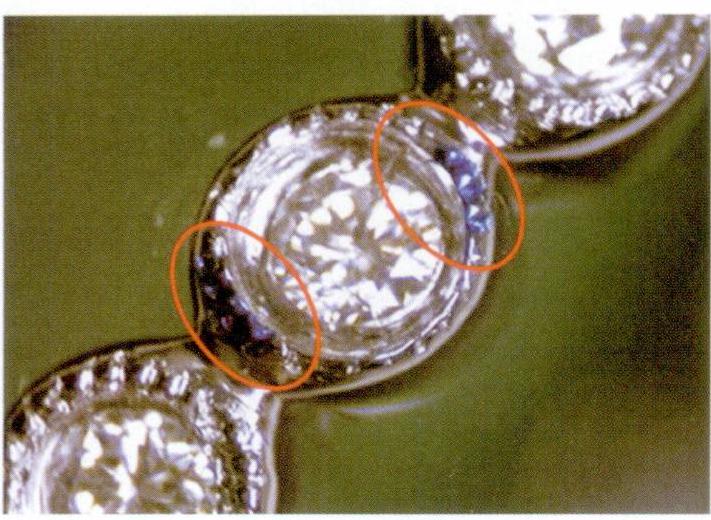
(7) Common setting problems for aperture inlays:
Gypsy inlay, also known as smear inlay, is similar to bezel setting in craftsmanship. The gem is deeply embedded in a circular metal stone bowl, and the edge is tightly wrapped and embedded by metal wrapping. There is a recessed metal ring edge around the periphery of the gemstone, which looks like a halo under light, hence the name Gypsy inlay. According to whether there is a metal hook in the metal stone bowl, it can be divided into Gypsy inlay and prong Gypsy inlay. prong Gypsy inlay, also known as flying edge inlay, batch wire inlay, or Italian inlay, is to carve out several metal small prongs by hand on the metal ring edge to set the gemstone. Due to the presence of the metal halo, the Gypsy inlay visually gives the impression that the gemstone has increased significantly, and the circular halo also has a certain decorative effect.
Good Gypsy inlay work quality should ensure that the gemstone is flat and tight, without phenomena such as rotten stones, oblique stones, or missing stones; the nest edge should be flat, uniform in thickness, and bright without scratches; the prong head should not be too long or too short, the prong direction should be consistent, the prongs should be symmetrical, uniform in size, and the prong head should fit snugly.
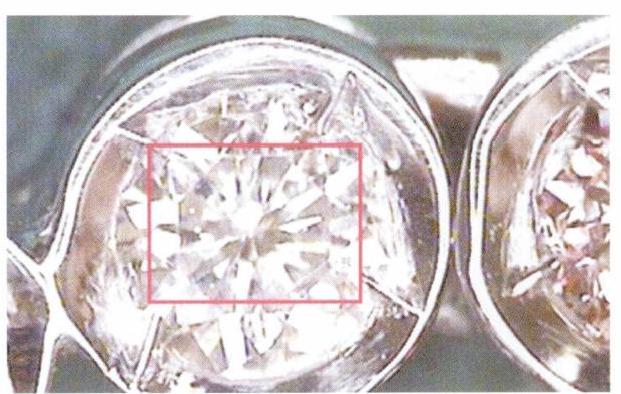
(8) Inlay problems in wax-inlaid casting:
Wax inlay is a widely used inlay method in the jewelry making industry, especially in the production of jewelry with a large number of inlaid gemstones. The wax inlay process has become an important way to reduce production costs, improve production efficiency, and increase product competitiveness. The so-called wax inlay is in contrast to gold inlay. It is to pre-inlay gemstones in wax models before casting. After preparing the plaster mold, dewaxing, and firing, the gemstones are fixed on the plaster wall of the mold cavity. When the metal liquid is poured into the cavity, the gemstones are wrapped by the metal liquid and firmly fixed in the metal inlay after cooling and shrinking. The wax inlay technology is based on the traditional investment casting process, but it has its own uniqueness and difficulty in each production process. While bringing efficiency to jewelry processing enterprises, it also carries certain risks. Only with a full understanding and strict operation of the wax inlay process can the stability of wax inlay quality be ensured and the advantages of wax inlay technology be truly brought into play.
Wax inlay casting technology is a comprehensive technology that integrates knowledge of casting technology, gemology, metallurgy, jewelry making technology, aesthetics, and other aspects. It has a wide range of knowledge and many influencing factors. Any change in factors may affect the wax inlay casting effect, leading to quality problems in the final product, or even scrapping. Therefore, if this process is not effectively controlled, the cost of wax inlay casting may be higher than that of conventional jewelry casting.
Common problems in wax inlay include: cloudy stones, rotten stones, black spots, loose stones, uneven or misaligned stones, and gold-covered stone surfaces
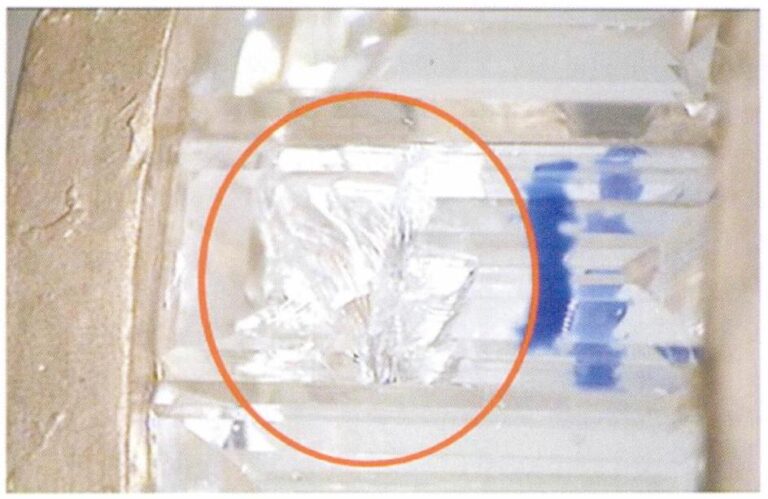
Section VI Electroplating Production Quality Inspection and Defect Analysis
Mer informasjon finner du her: https://sobling.jewelry/how-to-inspect-quality-of-finished-products/
Ulike smykkeproduksjonsbedrifter har forskjellige organisasjonsstrukturer, og de fleste av dem integrerer smykkepolering, galvanisering eller andre overflatebehandlingsprosesser etter støping og innstilling i galvaniseringsavdelingen. Galvanisering tilhører halvfabrikatprosessen og er den endelige prosessen for at produkter skal bli ferdige varer. Dermed dekker inspeksjonen av varer både halvfabrikata og inspeksjoner av ferdige produkter, med høyere inspeksjonskrav. I smykkeproduksjon, selv om hvert parti varer har blitt inspisert og godkjent av inspektører fra forskjellige avdelinger før de når galvaniseringsavdelingen, blir inspeksjoner ofte bare delvis utført i en bestemt prosess, noe som fører til ufullstendige inspeksjoner og utelatelser. Derfor forventes det at smykkeproduksjonsbedrifter vil møte forstyrrelser og akkumulere omarbeidede produkter i galvaniseringsavdelingen.
1. Electroplating Quality Inspection Contents and Methods
I henhold til kravene til overflatedekorasjon av varer, kan produksjonsprosessen til galvaniseringsavdelingen deles inn i flere typer:
1st type is the polished surface goods that only require Polishing, with the process flow as follows: grinding– cleaning – finished product.
Den andre typen er varer som krever galvanisering i én farge, med prosessflyten som følger: sliping - rengjøring - galvanisering - ferdig produkt.
3rd type is goods that require electroplating, surface sandblasting, etc., with the general process flow as follows: grinding – cleaning – applying protective paper – sandblasting – degreasing – etching-electroplating – finished product.
Etter voksfjerning og rengjøring settes det opp en polering QC, vanligvis til et halvfabrikat QC, og et ferdig produkt QC settes opp etter galvanisering. Som den endelige prosessen må elektropletteringskvalitetsinspektøren ha omfattende inspeksjonsevner, være kjent med produksjonsprosessene til forskjellige varer og avdelingens arbeidsprosedyrer, ta inspeksjonsarbeid gjennomtenkt og ansvarlig, umiddelbart inspisere produkter som overføres fra forrige prosess, og raskt gi tilbakemelding om eventuelle problemer som er funnet til relevant personell; inspiser strengt ferdig produktkvalitet i henhold til selskapets produktstandarder eller kundekrav, kontroller produktkvaliteten strengt og forhindre at produkter som ikke samsvarer med fabrikken forlater fabrikken.
Innholdet og metodene for kvalitetskontroll for galvanisering er som følger:
① Understand the requirements of the production work order.
After the QC staff checks the number of goods received, they should then read the order to understand the general situation of the batch of goods, such as the quality of the goods, the required engraved inscriptions, the size of the goods (hand size), the stone data, whether it needs edge grinding, sanding, whether it involves color separation and the desired effect of the goods. The QC staff should know the products’ general quality standards and consider each customer’s requirements.
② Check the quality of the stones and the stone setting.
Kvalitetsinspektøren bør mestre de grunnleggende identifikasjonsmetodene for vanlige edelstener, sammenligne steindataene og innstillingskravene på bestilling, og nøye inspisere hver stein for å se om kvalitet, størrelse, kutting, farge, etc. er i henhold til ordrekravene. I henhold til egenskapene og kravene til forskjellige innstillingsmetoder, må du nøye sjekke innstillingskvaliteten for å se om det er problemer som ripesteiner, ødelagte steiner, løse steiner, skrå steiner, ujevne steiner, vridde steiner og skrå steiner, og om spissene, festene og spissene er polert til en lys glans.
③ Check the size and characters of the goods.
Hvis bestillingen spesifiserer størrelsen på varene, må den faktiske størrelsen måles under inspeksjonen for å se om den samsvarer med bestillingskravene. Sjekk om det mangler eller er feil påskrift, om plasseringen er riktig og om påskriften er tydelig.
④ Check the functionality of the goods.
For eksempel, når du inspiserer øreringer, vær oppmerksom på om ørepinnene er rette, fleksibiliteten, elastisiteten og tettheten til øreklipsene; funksjonen til armbåndslåsen og hengslet, om det beveger seg jevnt når det bæres; om hullene mellom de to sidene er for lange; om kjedespennen er fleksibel; i tillegg til å ta hensyn til elastisiteten og fleksibiliteten til brosjespennen, må du også merke deg retningen på stiften (fest fra høyre til venstre); anhengets kausjon skal være fleksibel, og løkkene skal være runde.
⑤ Check the metal quality.
Carefully inspect the goods for any metal-related issues. Common metal quality problems include metal withering, sand holes, metal cracks, lack of smoothness, metal inclusion residue, and other defects. When these problems exist, rework is required. For milgrain and sandblasting goods, thorough grinding and Polishing must be done after migraine and sandblasting so that incomplete polishing defects can be ignored before milgrain and sandblasting. Still, it must be ensured that the goods have no issues with the setting, size, movement function, metal quality, etc., before milgrain or sandblasting. After milgrain, pay attention to whether the milgrain edges are uniform, whether there are broken stones or collapsed edges; after sand pushing, the sand should be neat and in place without crossing the boundaries or forming wrinkles. Before electroplating, check again for loose stones, wax crumbs, and metal crumbs at the bottom of the stones, and before and after electroplating, ensure that the goods are kept clean and tidy.
⑥ Inspect the overall quality of the goods.
I henhold til ordrekravene eller referanseprøver, inspiser den generelle kvaliteten på varene. Kontroller om det er noen problemer med metallkantens linjer, vinkler og nivåer, og sørg for glatte linjer, presise vinkler, tydelige nivåer, rundhet der den skal være rund, og firkantethet der den skal være firkantet. Edelstensinnfatningene skal være sikre og riktig plassert, og steinhullene skal være gjennomsiktige. Metallinnholdet skal oppfylle kravene, og metalloverflaten og kantene skal være glatte, uten deformasjon, åpenbare sandhull, visne sprekker eller rene mellomlag. Ingen positive og negative overflater i galvanisering skal eksistere, og ingen gråsvarte, gule flekker eller tåke skal være til stede i rhodiumplating.
Pay attention to the specific requirements of different types of goods. For example, for ring-type goods, the ring size and ring shank should be consistent, and the ring size should be correct round; for earring-type goods, the earring length should match the order, the ear pins should be straight, soldered through, the loops should be asymmetrical, and the ear clips should be flexible; for pendant-type goods, the bail should be adaptable, soldered through, and the loops should be round; for necklace and bracelet-type goods, the links should be smooth, and the angles should be consistent. Since the chain’s metal is relatively thin, special attention should be paid to whether there are any signs of breakage in the movable joints. The soldering of the connected position should be complete and clean, without noticeable marks of soldering for bracelet-type goods. The higher function should be flexible, and when closed, the clasp should touch closely, without gaps.
➆ Methods for dealing with issues.
Etter at inspektøren har identifisert feilene i varene, tas det i bruk ulike teknikker basert på hvor alvorlige problemene er. Vanligvis opprettes det et reparasjonsteam i galvaniseringsavdelingen. I tillegg til metallbunner med metall som visner, sprekker, manglende glatthet og sandhull, er det også problemer som at ringstørrelsen ikke er rund på grunn av feil behandling, at ringskaftet ikke er glatt, at hengslene er for løse eller for stramme, at låsene ikke er myke eller fleksible, manglende graveringer, ødelagte kjeder, overpolering, inkonsekvente spissstørrelser osv. som alle kan overlates til reparasjonsteamet for omarbeiding. Alle problemer må løses før galvaniseringen, slik at man unngår å reparere eller slipe varene etter galvaniseringen, da dette kan forårsake betydelig skade på gjenstandene.
2. Common Electroplating Defects Problems
(1) Common Electroplating Defects in Various Types of Jewelry:
Disse feilene kan oppstå i ulike typer smykker, og dekker hovedsakelig aspekter som metallkvalitet, innfatningskvalitet, galvaniseringskvalitet eller andre overflatebehandlingseffekter.
① Jewelry Metal quality:
The content does not meet the standard requirements, welding should use materials with the same content as the body; Rose metal is prone to discoloration, production companies should make reasonable choices and conduct necessary tests, they can also use artificial sweat immersion and electrochemical tests to infer the alloy’s anti-discoloration ability; Sand holes are exposed after the goods are polished, repair sand holes in jewelry by cleaning, laser welding, and polishing, avoiding heat damage to gemstones; The product shows severe shrinkage after polishing, it is necessary to strengthen the casting process’s control and improve the casting quality for such defects; After polishing, metal slag appears on the metal surface, complex spot defects in jewelry arise from issues like nickel segregation, silicon-related reactions, and foreign material inclusions, requiring meticulous smelting and material handling to prevent; Cracks appeared in 18K red metal, to solve this problem, in addition to selecting appropriate mixed alloys, when hot working jewelry, it is necessary to reduce the total thermal stress and structural stress to the lowest level rather than just adopting a slow cooling method to reduce thermal stress; Cracks appeared on the 18K white mesh bottom.
② Jewelry Shape issues:
Final products not follow original sample; Product deformation; Bottom support pole not removed; Abnormal bottom hole of the product; The edge is not smooth; The edge size is unsmooth; Metal edge collapse.
③ Jewelry Polishing issues:
The polishing work is insufficient because some parts of the product have not been thoroughly polished, and the previous process’s original surface state or processing traces still need to be retained; The product inscription is unclear; Metal surface perforation; Uneven metal surface; Excessive Polishing; Scratches on the Polished Surface; Poor Electrolytic Polishing Effect.
④ Jewelry Settings issues:
Glue not removed; Stones falling off during Polishing; Pearl surface scratched; Jewelry pieces are thrown away with great force in Polishing, causing diamond fractures; Stone drop off during ultrasonic cleaning; Uneven height of gemstones; Gemstones turning dark; High prong scratching hand; The Prong is not round; The prong head is not smooth; The prong of the gypsy setting is broken; The metal edge of the channel setting is uneven.
⑤ Jewelry Plating Issues:
The polishing wax removal is not clean; The oil removal needs to be more thorough; The inspection of the coating color is not standardized, and the client has objections to the inspection results; The Rhodium plating color is not bright enough; The white color of the Stone turns yellow after plating; The jewelry surface turns cloudy after plating; The bottom of the Earring is not plated, and the diamond appears black; The bottom of the caged back is dull; Color change during electrolytic oil removal; Coating pinholes and pitting.

(2) Defects of various types of jewelry in electroplating
① Defects of pendant electroplating:
The bail and the jump ring cannot be fastened; The bail is too small, and the chain is complex; Defect in the welding position of the bail; The jump ring is not round, and the pendant is not aligned; Loose shrinkage on the inner wall of the bail; Bail and Jump ring welded together, unable to move.
② Defects of finger ring electroplating:
Improper position of the inscription; The ring shank is asymmetric; The decorative pattern is deformed; Inlaid parts skew; Stress Corrosion Cracking of 14 KW Ring’s Prong; Ring shank too thin; The ring size does not meet the requirements.
③ Defects in bracelet and necklace electroplating:
Excessive gap and chain breakage; Non-uniform connected gaps; Welding incomplete; Chain breakage; Chain specifications do not match; Pendant is not centered; The chain length does not meet the requirements; The leather cord is not securely fastened and comes loose from the leather cord clasp.
④ Defects in earrings electroplating:
The position of the earring pin welding is incorrect; Earring edge is not symmetrical; Earring face is not symmetrical; The jump ring is deformed & incomplete; The support pole of the Earring clap is too thin; Earring post with sanding marks; The ear back pressure is too loose; The ear pin is crooked and deformed; The ear pin is broken; The earring hinge pivot falls off; There is a crack at the welding position of the earring hinge pivot; Skin Scratches on the earring hinge pivot; The earring clap does not sit in the center of the ear pin; Ear back sizes are inconsistent; The bracelet is not smooth; The bracelet is uneven and deformed; The bracelet opening clasp is not flexible; The Security Latch is not tight; The size of the open bangle does not meet the requirements; Wearing the bangle at the clasp part causes hand scraping.
